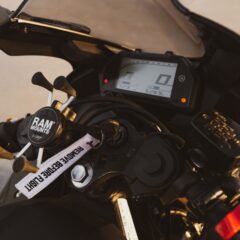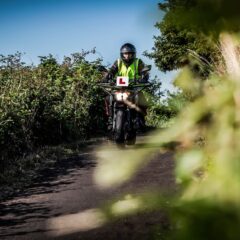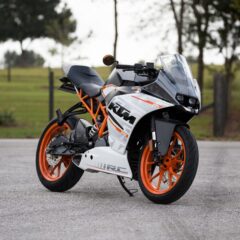
7 Top Motorcycle Accessories
With Christmas just around the corner, you might be wondering what to get your favourite motorcycle enthusiast or even a little something for yoursel...
 Phoenix Motorcycle Training LTD
Phoenix Motorcycle Training LTD
 Phoenix Motorcycle Training LTD
Phoenix Motorcycle Training LTD

It’s not just ‘practice that makes perfect’. Knowing what and how to practice so you can improve your motorcycle skills is necessary too. In this series of blogs, we’ve covered steering technique, braking safely and even rider instinct. Now it’s time to share two great motorcycle tips for new riders about acceleration.
Correct throttle control will give you more control on two wheels, making for a smoother ride. In some cases, it may even make your bike more economical to run as you’ll be using less fuel.
When it comes to bike control, weak acceleration can be as bad as accelerating too hard. Knowing how much you need to open the throttle and when is important to learn. That’ll take knowledge and practice. Lucky for you, we’ve included some practice exercises at the end of this blog. Read on for our two great motorcycle tips on acceleration for new (and old) riders.
As we’ve already mentioned in our previous blog about braking, where you sit on your motorcycle impacts balance and stability. Sitting high in the saddle, hanging on the handlebars makes your motorcycle more willing to wheelie when you accelerate. That reduces the control you have over your machine.
For complete control, you need to adopt the correct position. Fortunately, this is not too different from the braking position you may already be practising. Lean forward and anchor yourself on the footpegs. Keep your arms relaxed, your grip loose and your eyes gazing far ahead.
By moving your body lower, you feed more of your weight lower down the bike. This keeps the centre of gravity, or mass centre, lower down and reduces the likelihood of wheelies.
Your motorcycle’s power depends on the gear and engine speed you choose. Increased engine power comes with increased engine speed – all the way to the red numbers. The red section of your speedometer indicates the speed reached could be causing damage to some of the engine’s parts or components.
Choosing a high gear when you have low revs results in weak acceleration. You may even stall the motorcycle if the gear is too high for the revs. Choosing a low gear with high revs produces strong acceleration. Newton’s laws of motion also influence motorcycle acceleration and why they increase speed faster than cars.
There are two crucial situations that require acceleration mastery. The first is passing other traffic. Weak and hard acceleration in this situation can both be dangerous. The other is accelerating onto a motorway to merge with other traffic. Accelerating too hard can cause you to go too wide into the traffic you’re merging with. Too little means you won’t reach the speed of the other traffic and it’ll be dangerous merging.
It’s important to master acceleration for safe passing. You should aim to pass quickly, safely and with complete control. Weak acceleration can be as dangerous as accelerating too hard. You’ll need to plan ahead, spot the opportunity for passing early and use a free stretch of road to pass. This is crucial.
Many motorcyclists start their passing manoeuvre too late. That puts pressure on you to complete the end of your passing phase in a hurry.
Another common mistake is to begin passing in a gear that is too high. This stops the motorcycle from generating enough power to give enough acceleration. That also creates a hazard for the final phase of the passing stage. Starting to pass in a gear that’s too high leads to frantic downshifting midway. You lose time and speed as well as the distance you can cover.
Accelerating too hard makes it difficult to maintain control of your motorcycle. The front wheel will barely be touching the ground and that makes steering difficult.
All successful passing manoeuvres are planned ahead of time, and prepared for by switching to the best gear to generate the required acceleration and enough distance to the car ahead. It also starts as early as possible when the opening to pass occurs.
When you are entering a motorway or other high-speed road, you need to scan for an appropriate gap in the traffic and accelerate to a speed that allows you to enter it safely. Accelerating too hard can cause your motorcycle to go wider than intended. This needs to be corrected with anchored push steering or the four-step steering technique.
Sometimes, you’ll need to accelerate onto a road with lots of traffic from a standstill. In this scenario, you’ll need to masterfully balance clutch engagement and throttle control to get the required acceleration and avoid stalling the engine at a critical moment.
To exploit anchored push steering in this situation, you’ll need to get your feet quickly and firmly to the pegs as your motorcycle moves forward. The final exercise below will help you master this technique.
Now you understand the right position and gear for accelerating, it’s time for a little practice! The first two exercises below should be practised on the road. The final, third, exercise is for practising in a safe, secluded and clear area. Whether you’re an experienced rider or new to two wheels, these motorcycle exercises and tips for new riders will help you maintain better control of your bike.
Practice accelerating when you travel on straight stretches of road without traffic. Choose different gears to become comfortable with your bike’s power in different gears at different speeds.
Consciously assume the correct rider position for accelerating on your motorcycle. When you open the throttle, lean your body forwards, tense the muscles in your abdomen and lower back. This will counter the pull backwards. Transfer some of the weight to your feet, which should be firmly on the footpegs. Hug your fuel tank with your knees. Keep elbows loose and your grip on the handlebars relaxed.
If there is no traffic around, you can simulate passing. Choose the point to start your passing manoeuvre. Choose a gear that will generate enough accelerating power smoothly. Make proper visual checks and use your indicators to overtake the ghost car. Carry through the manoeuver and return to your lane.
Don’t forget to use mirrors and check your blind spot!
Consciously choose your gear. Keep note of the traffic speed on the road. Accelerate quickly to enter the gap you have chosen. Enter the gap and adjust your speed to fit with the rest of the traffic.
Focus on your riding position and choice of gear. Entering a gap in fast-moving traffic should be smooth, relaxed and drama-free. Using your eyes, riding position and the correct gear is crucial to mastering this manoeuvre.
Mastering this exercise will make entering a motorway with dense traffic from a side road or from a standstill easier and less anxiety-inducing. You’ll need a 3-metre wide ‘track’. You can set this up in a large car park or similar area using cones or other markers.
Make a quick start from a standstill and immediately place your feet firmly on the pegs. You start should be controlled with the clutch and throttle. Use an anchored push while also increasing the throttle. Keep your gaze far ahead and point where you want to go. This point should be in the middle of the lane of the road you enter. (Mark this with cones too, if you like)
Practice this manoeuvre with both left and right turns. You’ll know you have got this right once you can immediately get your feet to the pegs while accelerating considerably. You’ll also be able to follow your imaginary line to the centre of the right lane you’re turning into.
If your feet drag, run or peddle, or the bike doesn’t accelerate quickly you’ll need to keep at it. The same goes if you don’t end up in the middle of the lane of the road you enter from the left or right. Practising these motorcycle tips for new riders will help turn the techniques into automatic behaviours. Keep at it, you’ll crack it with practise!

With Christmas just around the corner, you might be wondering what to get your favourite motorcycle enthusiast or even a little something for yoursel...

If you love motorcycle riding, you’ve probably daydreamed about riding a motorbike for a living. A professional racer or stunt rider is OK for some...

Getting a UK motorcycle licence can seem a complicated process. Particularly when compared to a driving licence for a car. Whether you choose the pro...
This website uses cookies to personalise content, ads, and analyse traffic, sharing data with partners who may combine it with other information. See our Privacy Policy for more information.